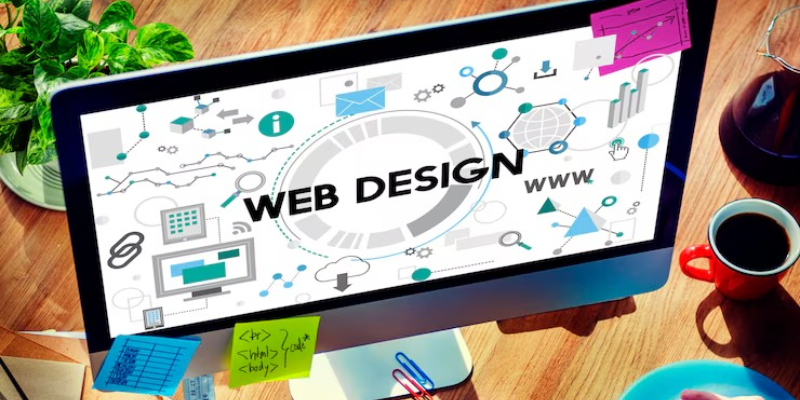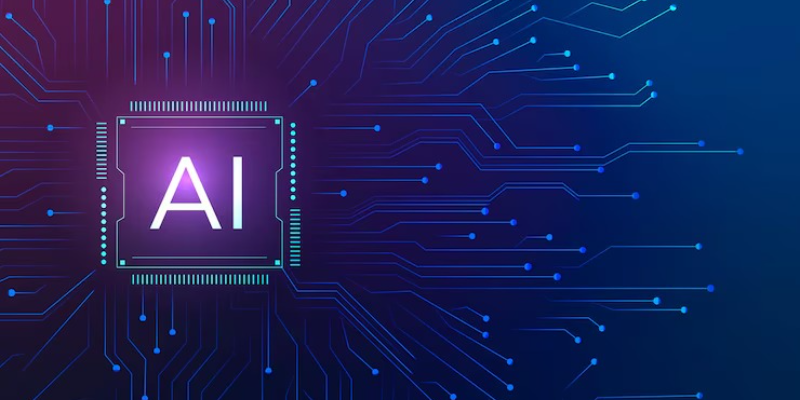

This year is the year of transformative innovation as the web design landscape is evolving fast. At the forefront of this revolution are two technologies Artificial Intelligence (AI) and Virtual Reality (VR). Combined, these technologies are transforming design standards, and as you might expect, are creating entirely unique and new user experiences. Web design has undergone a revolution – AI in web design and VR in web design has become game changers, allowing businesses to build more exciting, inspiring and interactive websites. In this blog, we will find out how these technologies are changing, explore the web design trends 2024 with AI and VR, as well as how these technologies are redefining web development using AI and VR.
Web design has been at the forefront of the AI revolution. Relevant to businesses, relevant to developers, web design with the help of AI is now proving to be a powerful tool for streamlining workflows and improving how users experience the web.
Automated Design Tools: However, what would an AI platform magic a website for if it would cost a thousand dollars to illustrate just one? Enter the machine learning magic of AI-powered platforms like Wix ADI and Squarespace. They analyse what’s user preference and make fully functional websites in minutes.
Personalized Experiences: A site running ML and computer vision can provide an experience of it being tailored to the visitors based on behavioral, demographic and other features. In this case, e-commerce websites can recommend products based on a user's previous shopping behaviour.
Chatbots and Virtual Assistants: A chatbot powered by AI is 24/7 customer support that can increase customer satisfaction and engagement for business.
Data-Driven Insights: As user behavior is analyzed by AI algorithms you can get some actionable insights around improving design elements and optimizing your website performance.
If a business wants to leverage AI, partnering with a web development firm in Bangalore helps them integrate the best of AI-related tools and technologies seamlessly for its website.

Virtual reality is changing the way we build websites by bringing immersive, interactive experiences. While it sounds like a fancy name, VR in web design is actually more than just the aesthetics; it’s an opportunity to create virtual environments where people can interact with digital content in a much more meaningful way.
Virtual Product Demos: VR gives users a “try before you buy” experience with products, allowing you to have a trial run before committing to making them a permanent feature in your office, home, or kitchen. It’s particularly helpful for industries like retail, real estate, and automotive.
Virtual Tours: Virtual property tours that let users to find out about spaces without actually visiting them is being used on VR by real estate websites.
Immersive Storytelling: VR can be a powerful story telling medium used to connect emotionally with one's engagement.
Training and Education: In the training simulation and education sector, websites that provide virtual reality enabled dexterity are used.
By working with a UI UX design company in Bangalore, businesses can attract them in such a way that their web design introduces VR elements which increase user engagement and satisfaction.
Several exciting trends are present for integrating AI and VR within web design. With 2024 upon us, and these trends about to play a role in the new websites we would host, they would always redefine the way websites are designed and experienced.
1. AI-Powered Personalization: Website hyper personalisation is becoming more possible, due to ever more sophisticated AI algorithms. For example AI can change the layout, colours and content on a website on the fly based on what a user prefers.
2. Immersive VR Experiences: Web design with VR is allowing businesses to create immersive experiences that attract users in a more meaningful way. VR is going to be a cornerstone of the modern web design, and virtual store and interactive learning module is what it will bring to you.
3. Voice-Activated Interfaces: Voice assistants are expanding AI, making websites easier to reach. Using voice commands, users can now browse websites, search content, and use features effectively.
4. 3D Design Elements: The emergence of VR is growing the adoption of 3D design elements. To make the user experience more engaging, websites are now adding 3D graphics, animations and spatial designs.
5. AI-Generated Content: To create high quality content (blog posts, product descriptions, and all others) content, tools such as Jasper and Copy.ai are being used. Not only is this faster, but it also always ensures consistency of content.
6. Real-Time Data Analysis: Businesses can get real time insights into their users’ behaviour and optimize their websites as they go.
AI and VR are not just making the web a better place — they’re fundamentally changing what designing for the web means. Here’s how:
Streamlined Processes: While AI tools are helpful in automating repetitive tasks, they still leave design to others to get creative and develop strategy.
Enhanced User Engagement: VR experiences are immersive ones that keep users hooked for longer.
Increased Accessibility: AI driven tools make sure that websites are accessible to everyone regardless of their disability.
Improved ROI: Those companies who invest in AI and VR achieve higher conversion rates and increased customer retention.
However, for companies looking to stay ahead in this race, partnering with a web development company in Bangalore or buying web hosting in Bangalore can be useful to get the kind of technical support for these technologies effectively.
While the benefits of AI and VR in web design are immense, implementing these technologies comes with its own set of challenges:
High Costs: Integrating AI and VR may come with an initial investment. But in Bangalore, if you are working with a web development company, you find cost effective solutions.
Technical Complexity: Not only does AI and VR demand specialised skills and expertise, but there’s a lot to learn in these fast moving areas of technology. Use of UI UX design firm in Bangalore results in implementing these technologies correctly.
Data Privacy: User data is the key to AI driven personalization, so it’s inherently risky from a privacy standpoint. To keep their users trust, businesses have to follow data protection laws such as GDPR.
Device Compatibility: Not all devices will support VR features. You also want to be sure to make your content cross platform compatible so you can reach a larger audience.
So, the Future of AI and VR in Web Design.
It is undoubtedly because the future of web design is linked to the advances in AI, and VR. Here’s what we can expect:
Seamless Integration: Web design will come to embody AI and VR, bringing unparalleled user experience.
Increased Adoption: As the costs go down and the awareness rises, more will start to use AI and VR.
Enhanced Creativity: With the help of AI tools designers will explore the limits of creativity and dare to create websites not only functional, but also gorgeous.
Sustainability: Web design for sustainability is going to be hugely optimized by the introduction of AI, cutting down on resource consumption and energy use.
AI and VR are revolutionizing web design in 2024, offering new ways to engage users and create memorable experiences. Revolutionizing web design with AI and VR means pushing the boundaries of what’s possible, setting new standards for interactivity, accessibility, and innovation. It’s no longer optional for businesses hoping